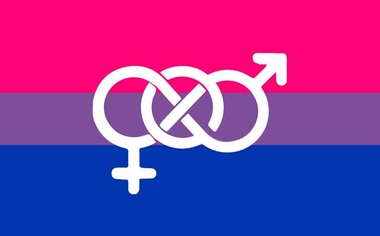Personal histories demonstrate bisexuality is not a phase

by Harrie Farrow
BiAngle Columnist
Many young people these days get positive responses to coming out as bisexual. However, even those youth are not immune to the general biphobia that’s in the air.
One of the messages that young bisexuals still contend with quite heavily is that bisexuality is a phase and that those claiming a bisexual identity eventually settle into gay or straight. Even adults who are trying to be accepting and supportive will say to young people coming out as bisexual things like, “You don’t have to decide what you are yet. It’s okay to experiment. I’ll still love you no matter what your sexuality ends up being.”
These messages, along with frequent headlines claiming that some bisexual celebrity is now straight or gay based on a new committed relationship, keep doubt and questioning in even the most supported young bisexual’s mind.
I am fifty-five years old and have identified as bisexual since I was fourteen. About a year ago I met a twenty-three year old bisexual man who was open and proud and well accepted by his peers. Yet three minutes into a casual conversation about bisexuality (he and I were chatting at a music venue) he said, “Talking to you already makes me feel better about being bisexual.” I was surprised by his comment because we’d really not said much to each other, and he seemed perfectly comfortable with his bi-identity. So I asked him to explain.
He responded that he’d never met someone who was older and out and comfortable with being bisexual. He’d never before been able to have a relaxed conversation about bisexuality with someone who wasn’t his peer. Talking to me assured him that bisexuality was a viable long term sexual identity.
It’s common for bisexual support to be very youth based. Yet, it’s often our youth who struggle the most going through the process of coming out to themselves. They sometimes find unaccepting home or school environments.
In the case of bisexuals, coming out to oneself is often a longer process. In fact, some of the so-called “bi now gay later” phenomenon has to do with bisexuals who are bullied into identifying as “fully gay.”
Another phenomenon responsible for the idea that bisexuality is a temporary condition is that some bisexuals instead cave to a barrage of negative stereotypes and settle for identifying as a straight person who had gone through a phase.
In both cases, bisexuals sometimes go through periods believing this fiction themselves, only to “Come out Again” as bisexual, sometimes decades later.
When efforts are made with the intent of shining a light on older bisexuals—for example, Sue George’s blog series of interviews with bisexuals over 50 (suegeorgewrites.blogspot.com)—it’s not only great for bisexual elders to get validation, visibility, and understanding after sometimes decades of struggling against biphobia, it’s also incredibly helpful for the young.
The Still Bisexual Campaign, which is a social media and video campaign that aims at dispelling the bisexual myth that “they don’t stay that way,” is a totally awesome way that bi-visibility is being given to those who have identified as bisexual for years.
There’s a Bi Elders Community Page on Facebook as well, and many older bisexuals’ histories can be found on The American Institute of Bisexuality’s “Faces of Bisexuality.”
Thanks to these efforts, bisexuals of all ages now have resources to turn to when they have doubts about their sexual identity. Bisexuality is a stable lifelong identity and the history of bisexual elders proves it.
The Gayly – November 22, 2015 @ 7:30 a.m.





